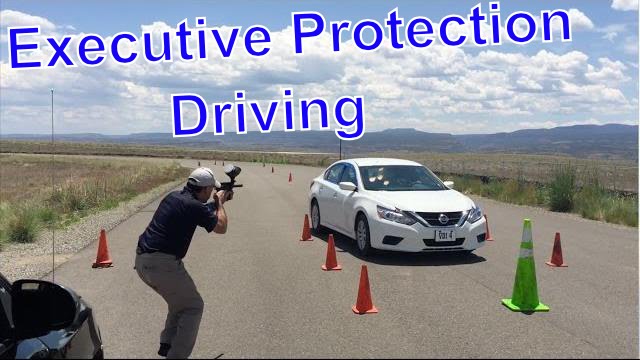Protective Evasive Driving Final Exercise ESI & VDI
Video
Description
Protective Evasive Driving – Final Exercise
** GI Bill Approved**
Training for Executive Protection Drivers
** »The most dangerous place to be is in or around
the protecter’s car. Sixty-four percent of attacks happen
when the protected person is in or around the car,
and these attack succeed an astonishing 77% of the time. »
Just 2 Seconds
Gavin de Becker, Tom Taylor, Jeff Marquardt
Protective Evasive Driving with ESI &VDI * Gi Bill Approved*
Find out more @ www.esibodyguardschool.com
Visit the ProShop @
Follow us on social media to stay connected!
Facebook-
Twitter-
Linkedin-
Protective/Evasive Driving Skills Module
Protective/Evasive Driving Course – is designed to provide participants with the knowledge, skill and ability needed to avoid potential behind-the-wheel emergencies, particularly those that involve physical threats to the vehicle and its occupants, such as deliberate ambushes and direct attacks. Topics to be covered include:
Driving and Vehicle Dynamics
Discussion of the forces that act upon a car (friction, momentum and centrifugal force) particularly at or near the upper range of the vehicle’s performance range, how acceleration, deceleration and cornering forces are compounded by sequential or simultaneous control inputs. In this course, an emphasis shall be placed on how the driver receives feedback from the vehicle and how they can more effectively interpret that feedback in order to maintain an appropriate balance between vehicle control and evasive maneuvering.
An emphasis is placed on building the students understanding of:
Indications and warning signs of degraded vehicle control and/or loss of control at upper limits of vehicle performance range (i.e. causes and impacts of understeer and oversteer conditions)
Impact of driver’s cognitive recognition, driver’s physical response, and vehicle response on the outcome of potential behind-the-wheel emergencies
Minimizing reaction time by overlapping recognition, response programming and physical/mechanical response sequences.
Correlation between field of vision, peripheral vision and focal points to improved performance in behind-the-wheel emergencies
Practical Exercises
The practical exercises in this module shall be conducted utilizing full size sedans, in a manner that:
Requires student
Supports the objective evaluation of individual student performance in comparison to vehicle’s known handling capability. For this course the minimum performance standard shall be 80% of the vehicles braking and cornering capabilities.
Practical exercises will include:
Slalom
A slalom or serpentine with a consistent chord and radius, of sufficient running length to improve driver cognitive skills and intuitive driving ability
Braking and Cornering
A decreasing radius turn requiring simultaneous heavy braking and continuous steering inputs while negating the application of complex, fine motor skills which are typically unavailable to drivers in real world operational environments due to physiological responses to stress
High Energy Braking
A dynamic braking exercise which introduces students to two different braking techniques, each of which allows the student to generate a very high level of braking force, and has specific parameters under which it should be utilized.
Evasive Maneuvering
A rapid, high energy, lane change exercise, utilizing a two dimensional obstacle and sufficiently short distances and narrow gates/lanes which will require significant driver hand speed and finite hand/coordination to successfully negotiate.
Reversing Exercises
A series of exercises that place the driver in situations where they most determine the most appropriate control inputs to achieve the required balance between speed and maneuverability.
Reverse Slalom
A slalom or serpentine with a consistent chord and radius, requiring cornering and braking inputs, and of sufficient running length to improve driver recognition of handling and field of vision limitations present when operating a vehicle in reverse.
Rapid Reverse Out
A straight line exercise requiring driver to approach a stop, respond to a potential threat by reversing rapidly until reaching a designated section of the exercise lane which provides space needed to perform a rapid reversing maneuver (2 Point “Y Turn”), while maintaining appropriate level of vehicle control.
Reverse Counter-Ambush/Counter-Carjacking Drill
Utilizing a pair of obstacles, one to the front of and one to the rear of the vehicle, driver must respond to threat originating at front of vehicle and maneuver around obstacle to the rear and into a designated lane while maintaining appropriate level of vehicle control, while placed under stress.































